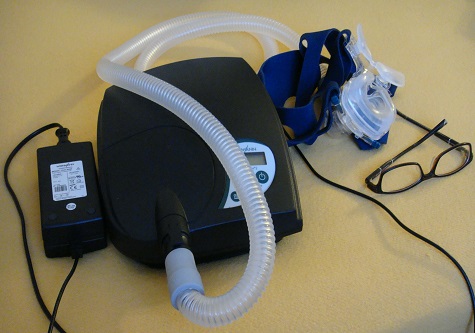Travel CPAP – How to Justify Device and Make Travelling Easier
Travel CPAP devices are increasingly gaining popularity as a great alternative to conventional CPAP machines. They are small and lightweight, making them ideal for patients that are constantly moving. Some are as small as a smartphone while others fit the size of an alarm clock.
Interestingly, their miniature size makes no difference when it comes to delivering the required air pressure. Some of the most popular travel-sized CPAP devices available today include ResMed AirMini, Somnetics Transcend, Human Design Medical Z1, Philips Respironics DreamStation Go, and Apex XT Fit. Some of them way less than a pound, making them extremely portable.
Different Types of Travel CPAP Devices
1. AirMini: It’s 5.4 inches long, 3.3 inches wide, 2.1 inches high, and weighs 10.6 oz., making it the smallest version available.
2. DreamStation Go: It’s 5.9 inches long, 5.9 inches wide, and weighs 1.88 pounds. Together with batteries, the length and weight increase to 4.8 inches and 3.41 pounds respectively.
3. Transcend: It’s 6.1 inches long, 3.5 inches wide, 2.8 inches high, and weighs 1 pound (16 oz.).
4. Z1: It’s 6.5 inches long, 3.3 inches wide, 2.0 inches high, and weighs 10 oz. this is the lightest travel CPAP machine available.
Battery and Power Options
Most of the travel CPAP devices available on the market today can run without batteries. This is except for the ResMed’s AirMini. Even though they cost a bit more, they provide an alternative to using conventional batteries. The duration of use on a single charge depends on how much pressure is in use and the accessories running alongside the device. For example, a heated humidifier could shorten the lifespan of a single charge.
At standard use, a typical travel CPAP device will last one full night. Other devices such as the DreamStation Go can last up to two nights. Fortunately, most of these devices come with a rechargeable lithium-ion battery that can be used wherever there’s access to a power source. However, they may not work if you plan to go camping or hiking.
Setting Options for Travel CPAP Machines
Each of the travel CPAP devices described above comes with a default air pressure setting of between 4 and 20 centimeters of water pressure. Considering that these are medical devices, Easy CPAP recommends getting a prescription from a doctor before using any of them. A doctor will help determine the amount of air pressure that’s appropriate for you. There are devices that have an Auto CPAP setting put in place to help monitor and adjust air pressure automatically depending on the patient’s needs.
Advantages of Using Travel CPAP Machines
1. Quiet. Generally, CPAP machines are built to be as quiet as possible. Having a noisy machine only makes it hard for patients to sleep. Manufacturers are continuously working to improve older models and eliminate any unnecessary noises that they produce.
2. Smaller SlimLine Tubing. A small SlimLine tube makes it easier to pack and carry a travel CPAP machine. It also makes it easy to move and change positions while asleep. Travel CPAPs are programmed to accommodate the increase in pressure caused by smaller SlimLine tubings.
3. Different masks. Fortunately, companies offer different types of masks to accommodate different types of users. However, some may have a limited range due to the features offered by each device.
4. Interactive displays. Travel devices are designed to make monitoring easy through integrated displays. Users are able to make changes through responsive touch screens and easy-to-press buttons. This eliminates the need to operate the CPAP device externally through a smartphone.
5. Batteries make it easy to go anywhere. Integrated batteries make it easy to travel with travel CPAP devices. Users can carry their machines with them wherever they wish to go.
Disadvantages of Using Travel CPAP Machines
1. Ineffective pressures. Sometimes, pressure may vary regularly and become inconsistent. This may require close attention and regular pressure adjustments to make the device effective. Unfortunately, you may need to consult your doctor before making any of these changes.
2. No humidifiers. Not all travel devices come with a humidifier. This means that you may not have a way of handling cases of a dry mouth or nosebleeds. A nasal spray could help make up for the lack of a humidifier. If not, the lack thereof may undermine the usefulness of the CPAP device.
3. Unresponsive buttons. For some models, the buttons may not be easy to use. Some require hard pushes to change settings while others seem clunky. This may make it challenging for users to navigate the device as they go through the menu.
4. Expensive. The average travel CPAP device costs about $500. Prices could rise to as high as $900. Models vary depending on the target market. Lower-end market devices are inexpensive but may lack some features. The convenience of handling a travel CPAP machine may also come at a cost.
5. Size. Some travel devices appear too large for a travel option. Others may become too heavy once batteries are included. This makes them hard to move around with, leave alone travel with them.
There are plenty of options to explore when it comes to finding the right travel CPAP machine. Some companies have built a reputation for reliability over the years. Their experience in designing and building CPAP machines helps to manufacture devices that meet the needs of various consumers. Before getting a travel CPAP machine, find out first if it will be able to meet your needs.
